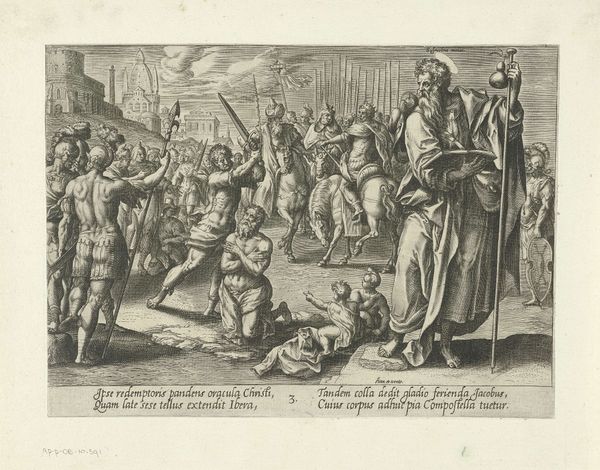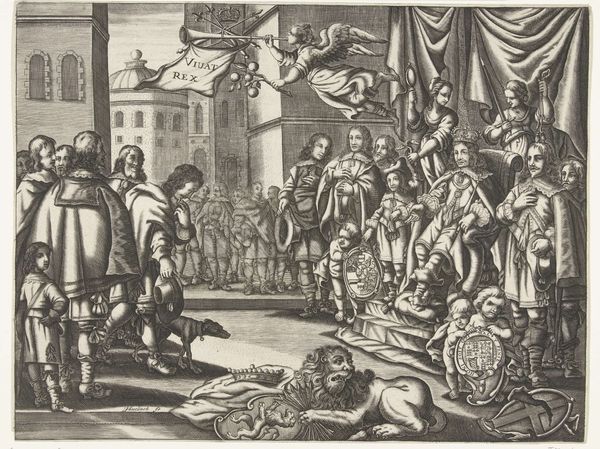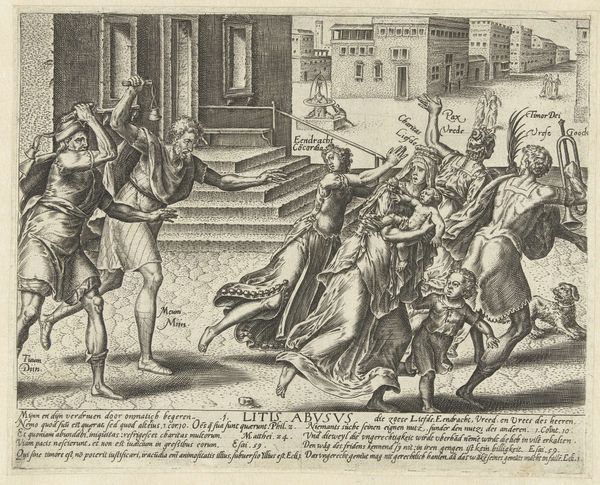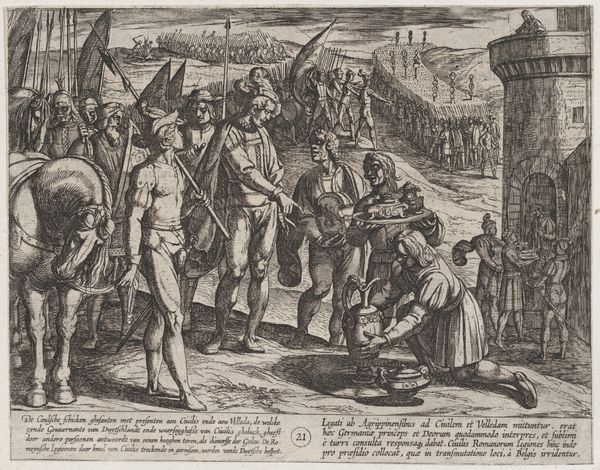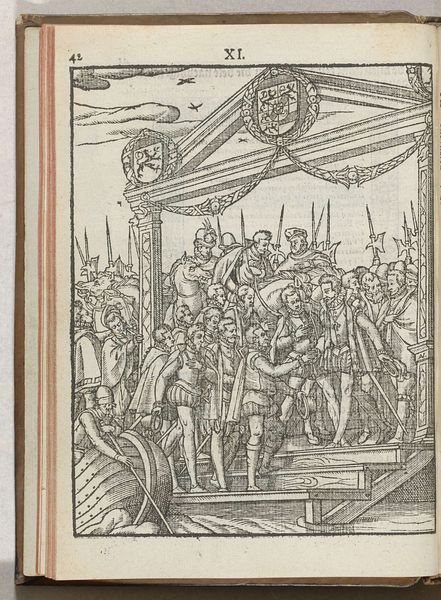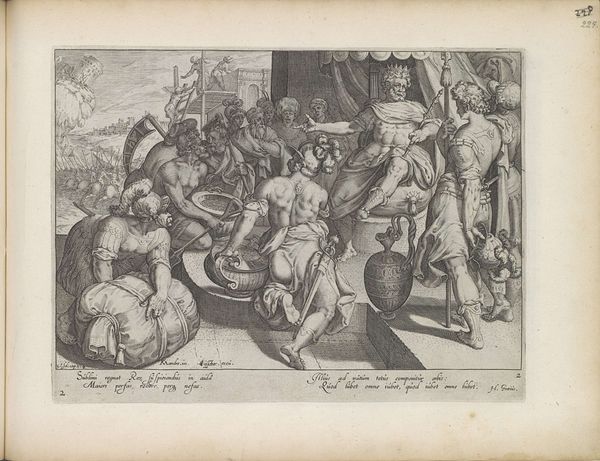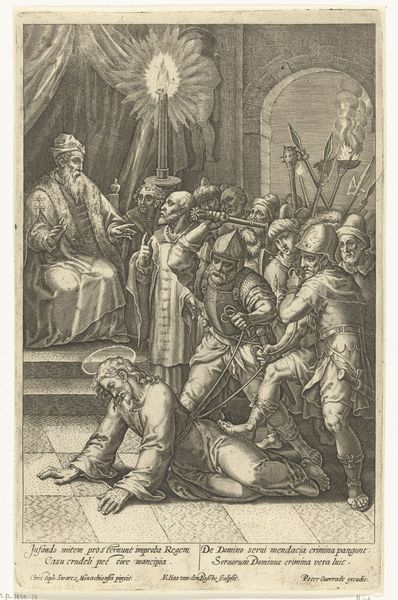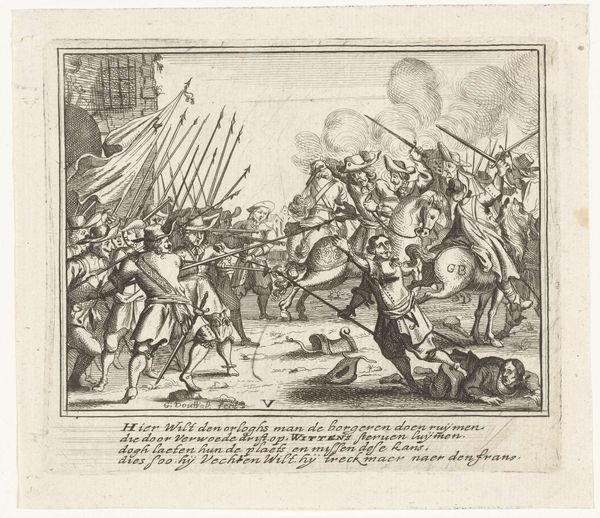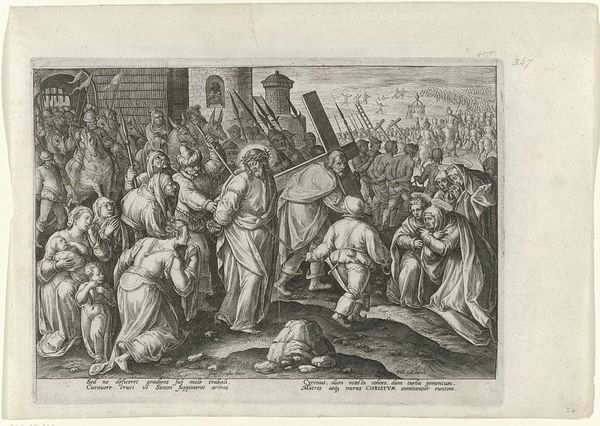
print, engraving
#
narrative-art
# print
#
old engraving style
#
mannerism
#
figuration
#
history-painting
#
engraving
Dimensions: height 205 mm, width 250 mm
Copyright: Rijks Museum: Open Domain
Editor: This is "The Israelites Taking the Followers of Baal Captive," an engraving by Philips Galle from around 1567 to 1570. It's striking how much movement he creates with just lines, but the violence is also very unsettling. How do you interpret this work? Curator: Considering only its formal qualities, the engraving's power resides in its intricate orchestration of line and form. Note how Galle uses cross-hatching to create depth and shadow, directing the eye to different areas of the composition. The figures are rendered with a Mannerist elongation, enhancing the sense of drama. Where do you see visual balance, or perhaps intentional imbalance, within the image? Editor: Well, the left side is chaotic with all the action, but the right feels very controlled and rigid with the architectural elements and more posed figures. Is that contrast important? Curator: Precisely. The juxtaposition establishes a dynamic tension, highlighting the conceptual separation between the act of capture and the apparent judgment being passed. Also, consider the composition with respect to foreground, mid-ground, and background, and how that spacing contributes to the narrative. Editor: So, the way he organizes the scene contributes as much to the story as the figures themselves? Curator: Indeed. Galle’s formal choices are paramount in constructing the narrative and conveying its emotional impact, independently of the depicted content. Editor: I see it now! The composition isn't just a backdrop, it's an active participant. I'll never look at an engraving the same way. Curator: A fitting lesson! The visual structure informs, dictates, and becomes the ultimate story.
Comments
No comments
Be the first to comment and join the conversation on the ultimate creative platform.
